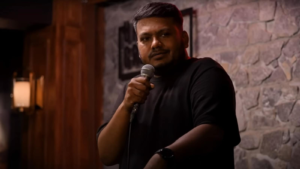
If 2024 was the year when war returned with a vengeance to the center of inter-State relations, it also witnessed some critical developments in warfare, featuring attrition, manoeuvre, and adaptation. The Russia-Ukraine and the Israel-Hamas wars underscore some fundamental truths about the nature of warfighting.

One key shift was how the Ukrainians changed their operational strategy by moving away from attrition-based war to maneuver by attacking inside Russia and occupying a large part of the Kursk region in August this year. Kursk was an ideal target for a maneuver-based breakthrough because it was thinly defended with poorly trained Russian conscripts. For the Ukrainians, it was precipitated by a convergence between opportunity and necessity. To relieve pressure on their territory, the Ukrainians exploited a fleeting opportunity to compel the Russians to redeploy their forces away from the main front in Kharkiv and Donbas. Ukraine’s breakthrough was largely executed by its best fighting and battle-hardened units, such as the 82nd Air Assault brigade in Kharkiv and forces drawn from other parts of the front. Yet this breakthrough also came about due to prior attrition and careful assessment of the weakest areas in Russia’s defences.
By attacking a weakly defended front, the Ukrainians secured a breakthrough and breached Russian defenses with a significant level of force. Apart from months of surreptitious planning, this was the primary factor for Kyiv’s success in Kursk. Until the incursion and occupation of Kursk, which is now under a sustained Russian counter-assault, the Ukrainians continued to fight in a war of attrition paired with small unit action consisting of drones and infantry supported by armored or tank forces.
Indeed, most of the combined arms actions currently undertaken by Ukrainian forces are by small teams with support from drones, artillery, and tanks, enabling infantry to advance through dense minefields, which has generated some success for them in set-piece battles. Generally, the Ukrainians have fought by way of attrition — a result of Russia’s dense defenses in the form of mines, trenches, and artillery across the depth and breadth of the battlefront that have prevented Kyiv from making significant breakthroughs. Kyiv has also struggled on the battlefield due to the lack of timely and adequate western supplies of mine-clearing equipment, ammunition, and tactical aviation.
Yet Ukrainian forces have done well, so far, by way of efficiency in that they have managed to do more with less. In close-quarter engagements, they have performed better, but platoon and company strength action, which has resulted in fewer Ukrainian casualties, has also prevented significant and rapid breakthroughs notwithstanding the gains in Kursk.
Despite the Biden administration’s decision to supply Kyiv with ATACMS with permission to strike inside Russian territory, the tide is unlikely to turn in favor of Kyiv, as the last 34 months of fighting with long-range precision fires have shown. Despite Kyiv’s successes in destroying Russian command and control nodes, logistics, and bridges, Moscow has adapted by hardening its command-and-control centres, resorted to the dispersion of its logistics, and dispatching supplies to the front. The Russians are poised to capture Pokrovsk, a key logistics hub in the Donbas region, with Ukrainian defenses creaking under a sustained Russian assault.
Consequently, progress has been time-consuming and incremental — inherent in attritional warfare. Neither side has been able to achieve a massive breakthrough by inflicting a single decisive blow; attrition is likely to wear down the Ukrainians more due to their depleting troop strength, declining morale, and fickle military supplies.
The Russians, entering 2025, have the advantage on the battlefield and are likely to gain more territory supported by the deployment of more forces, including from North Korea, reserves, and firepower.
Attrition has also been the name of the game for the Israelis against Hamas and Hezbollah, with Israel inflicting significant body blows that left the leaderships of both terrorist organizations decapitated and militarily fragile. Yet, Hamas still holds Israeli hostages captive and continues to fight despite being weakened, whereas Hezbollah, which suffered heavy casualties and saw a large part of its capability destroyed, eventually settled for a ceasefire but was not decisively vanquished.
Israel’s wars against Hamas and Hezbollah also involved attrition, but its greatest success was in penetrating and destroying the communication network of Hezbollah, paving the way for the elimination of four tiers of Hezbollah’s leadership combined with relentless air and ground assaults against the group’s military capability leaving it crippled.
Battlefields of this year, once again, reinforced the point made by Carl von Clausewitz, the Prussian general and military theorist, long ago that while the logic of war is conditioned by the objectives set for it by policy, the fundamental grammar of warfighting remains unchanged. through the ages.
Harsh V Pant is vice president for Studies at Observer Research Foundation (ORF), New Delhi. Kartik Bommakanti is senior fellow, National Security and Defence, ORF. The views expressed are personal




